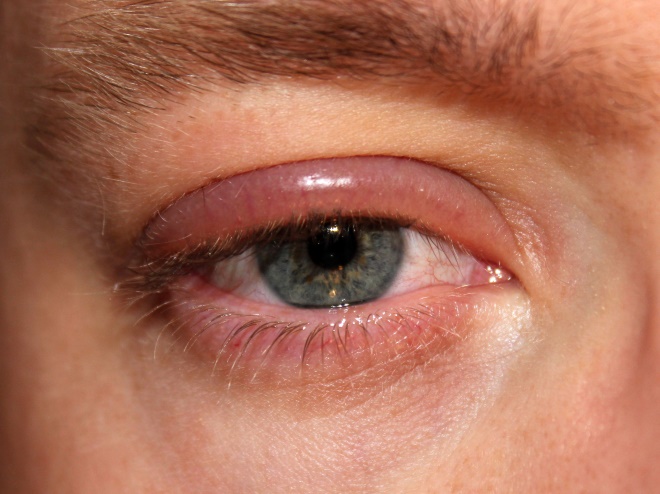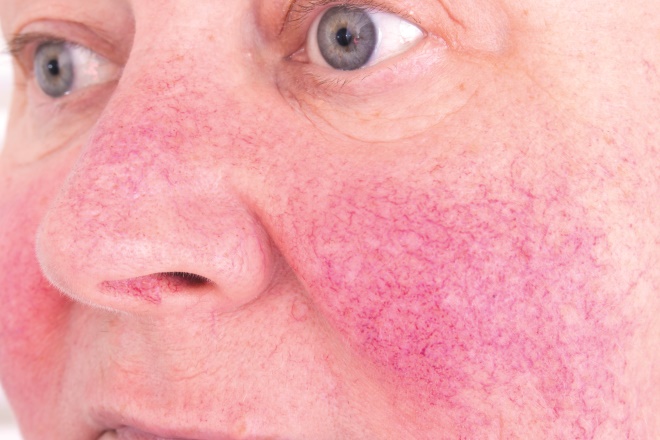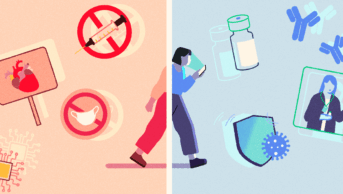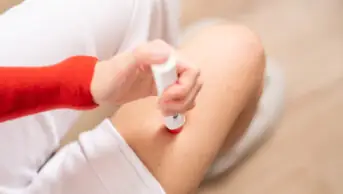
Shutterstock.com
Dry eye disease is one of the most common chronic conditions, and is estimated to affect between 1 in 3 and 1 in 20 people[1]
. Symptoms of dry eye disease, which usually affect both eyes, include:
- Irritation;
- Grittiness or feeling of sand in the eye;
- Burning;
- Soreness;
- Watery eyes;
- Visual disturbance.
These symptoms can occur in other conditions so diagnosis of dry eye disease can be a challenge. Other conditions with similar symptoms include hayfever and conjunctivitis. Hayfever usually occurs in combination with other symptoms, such as sneezing and itching. Bacterial conjunctivitis can also cause a sensation of grittiness and watery eyes, but symptoms usually start in one eye. The eye can become red and a yellow, sticky mucus is often present.
If a patient enters the pharmacy with eye symptoms, there are several questions pharmacy staff can ask to help find out whether their symptoms may be related to dry eye disease[2]
. Patients struggle to self-diagnose dry eye, so technicians should listen out for these symptoms and terms. These questions include:
- Is the dryness/burning/watering in both eyes? If the symptoms are in only one eye, it may be an indication of another condition, such as having a foreign body in the eye or bacterial conjunctivitis.
- How long has it lasted? If symptoms are severe with a sudden onset, this may be an indication of a more serious condition.
- Do you have mouth dryness? This could be a symptom of Sjögren’s syndrome.
- Was it precipitated by an event? Again, if the symptoms are brought on after a specific event, such as a head injury, this could be an indication of a more serious condition.
- Are you in pain? Patients with dry eye disease may feel discomfort or soreness, but severe pain may be an indication of a more serious condition.
- Does your vision clear when you blink? Dry eye disease may cause some slight visual disturbances, but this should clear when the patient blinks. If visual disturbance or difficulties persist, it may be a sign of something more serious.
- Is there redness or swelling? Patients with dry eye disease, or related conditions such as blepharitis, may have redness or swelling in their eyelids, but their eyes are likely to be unaffected. Pinkness in the whites of the eyes can be a sign of bacterial conjunctivitis.
Using these questions, pharmacy technicians can find out whether symptoms are likely to be related to dry eye disease, or whether patients need to be referred for another condition. If symptoms are mild and likely to be related to dry eye disease, pharmacy technicians can provide treatments and lifestyle advice. However, for a diagnosis of dry eye disease, patients should visit their optician or eyecare specialist.
Red flag symptoms
Some symptoms should be regarded as ‘red flag’ symptoms. In these cases, patients should be referred to their GP or directly to an eyecare specialist. These symptoms include:
- Severe or sudden pain in one or both eyes;
- Sudden onset of symptoms after a certain event;
- Mouth dryness in combination with other dry eye symptoms — this can be a symptom of Sjögren’s disease, a condition that reduces fluid in the body;
- Loss of vision or serious visual disturbance — this can be a symptom of retinal detachment, where the visual cells come away from the back of the eye, which can lead to blindness.
! If retinal detachment is suspected, patients should be referred directly to A&E.
When can pharmacy staff help?
Eyecare specialists are best placed to make a dry eye diagnosis; however, community pharmacists and pharmacy technicians may be able to help patients who come into the pharmacy in the following circumstances:
- If a patient has already received a diagnosis of dry eye disease and is looking for advice and relief of symptoms;
- If a patient is experiencing the symptoms for the first time, they may require advice and temporary relief of symptoms;
- If a patient has experienced the symptoms before and has previously found that over-the-counter treatments are effective.
Different advice and recommendations are appropriate depending on the severity and type of dry eye disease. There are two main types of dry eye disease: aqueous deficiency and evaporative dry eye. Each is caused by a different mechanism affecting the tear film in the eye.
Example: Identifying red flags
An overweight man in his forties, who is not a regular customer, approaches the pharmacy technician at the counter of a pharmacy.
Pharmacy technician: Hello, is there anything I can help you with today?
Patient: Hi. I have been having some problems with my eyes for a couple of days.
Pharmacy technician: I’m sorry to hear that. What sort of problems have you been experiencing?
Patient: My eyes have both been feeling really tired and gritty.
Pharmacy technician:Have you had any other symptoms at all?
Patient: No, no other symptoms. They have been watering a little, I suppose.
Pharmacy technician: Has your vision been affected at all?
Patient: No, my vision has been fine. I don’t wear glasses or contact lenses, anyway.
Pharmacy technician: And do you have any other health conditions or take any medicines at all?
Patient: I don’t have any health issues. I do take ibuprofen sometimes for mild headaches.
Pharmacy technician: It sounds like you may be experiencing symptoms related to dry eye disease. I can provide some advice and recommendations to help with that. However, if your symptoms get worse or you have any problems with your vision, you must go straight to your GP or optician.
Structure of the tear film
The tear film is a complex structure which comprises three layers:
- An oily layer, which prevents evaporation;
- A watery layer containing nutrients and essential proteins, which protect the eye;
- A sticky mucous layer.
Each part is made by special glands, including:
- The lacrimal gland (the main gland that produces the watery layer);
- Mucous glands (distributed across the surface of the eye);
- Meibomian glands (glands that produce the oily layer, running vertically in the upper and lower eyelids, opening just behind the roots of the lashes)[3]
.
The tear film is spread across the surface of the eye by the eyelids when eyes blink, and drains into the tear ducts (in the corner of the upper and lower lids) and then into the nose.

Source: MAG / The Pharmaceutical Journal
The tear film is a complex structure which comprises three layers: an oily layer, which prevents evaporation; a watery layer containing nutrients and essential proteins, which protect the eye; and a sticky mucous layer.
Types of dry eye disease
Evaporative dry eye is associated with an insufficient oily layer in the tear film, which can occur when the meibomian glands are damaged. Around 80% of patients with dry eye disease are affected by this type.
Aqueous deficient dry eye, on the other hand, occurs when the lacrimal glands do not produce enough of the watery component of tears to maintain a healthy eye surface.
These can occur individually or in combination.
Diagnosis of dry eye disease[4]
There are several tests that can be used to help eyecare specialists diagnose dry eye disease. These include:
- Non-invasive tear film break-up time. This is defined as the time taken to observe the first complete disruption in a light reflection off the tear film surface after a blink.
- Fluorescein dye test. Eye drops containing a yellow-orange dye are used to see the tears more clearly. This helps to assess how long it takes for the eye to start drying out. Advise patients who are concerned about the dye that it is only temporary. The colour of the dye will fade — it simply helps to show damaged areas of the eye.
- Schirmer’s test. Small strips of blotting paper are hooked over the lower eyelid. After five minutes, the strips are removed and studied to determine how wet the paper is. If the paper has wetted less than 10mm in five minutes, this indicates dry eye disease.
- Phenol red test. This is similar to Schirmer’s test, but uses a pH indicator hooked over the lower lids instead of paper, and is required to sit on the lower lid for only 15 seconds.
- Lissamine green test. Lissamine green is a dye in a paper strip. The strip is diluted with a salt solution (saline) and dropped on to the surface of the eye. The green dye allows the specialist to see early damage to the surface of the eye.
- Blink test. The blink test and non-invasive tear break-up time test require an individual to report how long they can prevent their eyes from blinking while staring at a screen, with ≤10 seconds leading to a suggestion that they may have dry eye this test can easily be performed by technicians in the pharmacy, however, the results of both the blink test and non-invasive tear break-up time test should not be considered a diagnosis, but may prompt further conversation.
- Slit lamp biomicroscopy. This involves observing the eye at high magnification with specific lighting techniques to examine the redness of the eye, the meibomian glands and the tear film in greater detail.
Some questionnaires can be used to help with diagnosis of dry eye disease or to assess how severe it is. Examples of these include the Dry Eye Questionnaire, Ocular Surface Disease Index, McMonnies test, SPEED test and Salisbury Eye Evaluation.
Risk factors for dry eye disease
There are several factors that can increase a person’s risk for dry eye disease or that can trigger an underlying condition. These can include being in a hot or windy climate and getting older — up to a third of people aged 65 or older may have dry eye syndrome[3]
. Women are also more likely to be affected by dry eye disease than men, and hormonal changes such as pregnancy or menopause can be a trigger for the condition.
Having certain diseases is also associated with dry eye disease[3]
. These diseases include:
- Allergic conjunctivitis;
- Contact dermatitis;
- Sjörgen’s syndrome;
- Rheumatoid arthritis;
- Lupus;
- Scleroderma;
- Bell’s palsy;
- HIV;
- Diabetes, especially if patients have high blood sugar.
Recent laser eye surgery (LASIK surgery) temporarily disrupts the normal activity of the tear film mechanism. Also, during laser surgery, the majority of the superficial nerve fibres in the cornea are cut, which increases the sensation of dryness and reduces the production of aqueous tears. This can lead to several months of dry eye symptoms, which usually resolve themselves.
Patients who take certain medicines may also be more susceptible to dry eye disease. These medicines include antihistamines, antidepressants (tricyclic antidepressants and selective serotonin inhibitors), beta-blockers and diuretics. Patients who wear contact lenses are also more likely to experience dry eye disease.
Evaporative dry eye can be caused by related eye and skin conditions, such as blepharitis or rosacea. Blepharitis is a condition where the edges of the eyelids become inflamed, causing itchy, sore and red eyelids that stick together, crusty or greasy eyelashes, a burning, gritty sensation in the eyes and increased sensitivity to light. One type of blepharitis, posterior blepharitis, can cause the meibomian glands to become blocked and dysfunctional, which affects the oily layer of the eye and leads to dry eye. Rosacea, a condition in which the skin on the face becomes red and blotchy, can also lead to blockage of the meibomian glands and, therefore, evaporative dry eye disease.

Blepharitis
Source: Wikimedia Commons

Rosacea
Source: Shutterstock.com
Example: Advising a patient about the risk of dry eye disease
Miss Marks, a female patient in her early fifties, approaches the pharmacy counter with a prescription for hormone replacement therapy.
Miss Marks: Hi, I have come to collect my prescription.
Pharmacy technician: No problem. Have you used this medicine before?
Miss Marks: Yes, I have. It helps with some of my menopausal symptoms, like my hot flushes. I’m having some other symptoms, though, and I am not sure whether I should be concerned.
Pharmacy technician: What sort of symptoms are worrying you?
Miss Marks: My eyes have been feeling very dry recently. I used to get a little dryness when I worked in an office with air conditioning, but I work at home now. I’m worried that it might be a sign that I am going blind.
Pharmacy technician: Symptoms of eye dryness are very common during the menopause, and are more common in women than men. Any loss of vision due to dry eyes is very rare, and occurs only in very severe cases. Would you like to have a chat about your symptoms with the pharmacist? Then perhaps I could give some suggestions that may help?
Miss Marks: That would be great. Thank you so much for your help.
References
[1] Tear Film and Ocular Surface Society Dry Eye Workshop II. TFOS DEWS II Report 2017. Ocul Surf 2017;15(3):269-650. Available at: http://www.theocularsurfacejournal.com/issue/S1542-0124(17)X0003-7 (accessed December 2017)
[2] Lawrence J. Multidisciplinary panel of experts agree on best treatment of dry eye condition in community pharmacy. The Pharmaceutical Journal supplements: Focus on dry eye. 2016 [online]. doi: 10.1211/PJ.2016.20201187
[3] National Eye Research Centre. Dry Eye Syndrome. Available at: https://grants.nerc-charity.org.uk/dry-eye-syndrome (accessed December 2017)
[4] NHS Choices. Dry Eye Syndrome. Available at: www.nhs.uk/Conditions/Dry-eye-syndrome/Pages/Diagnosis.aspx (accessed December 2017)



